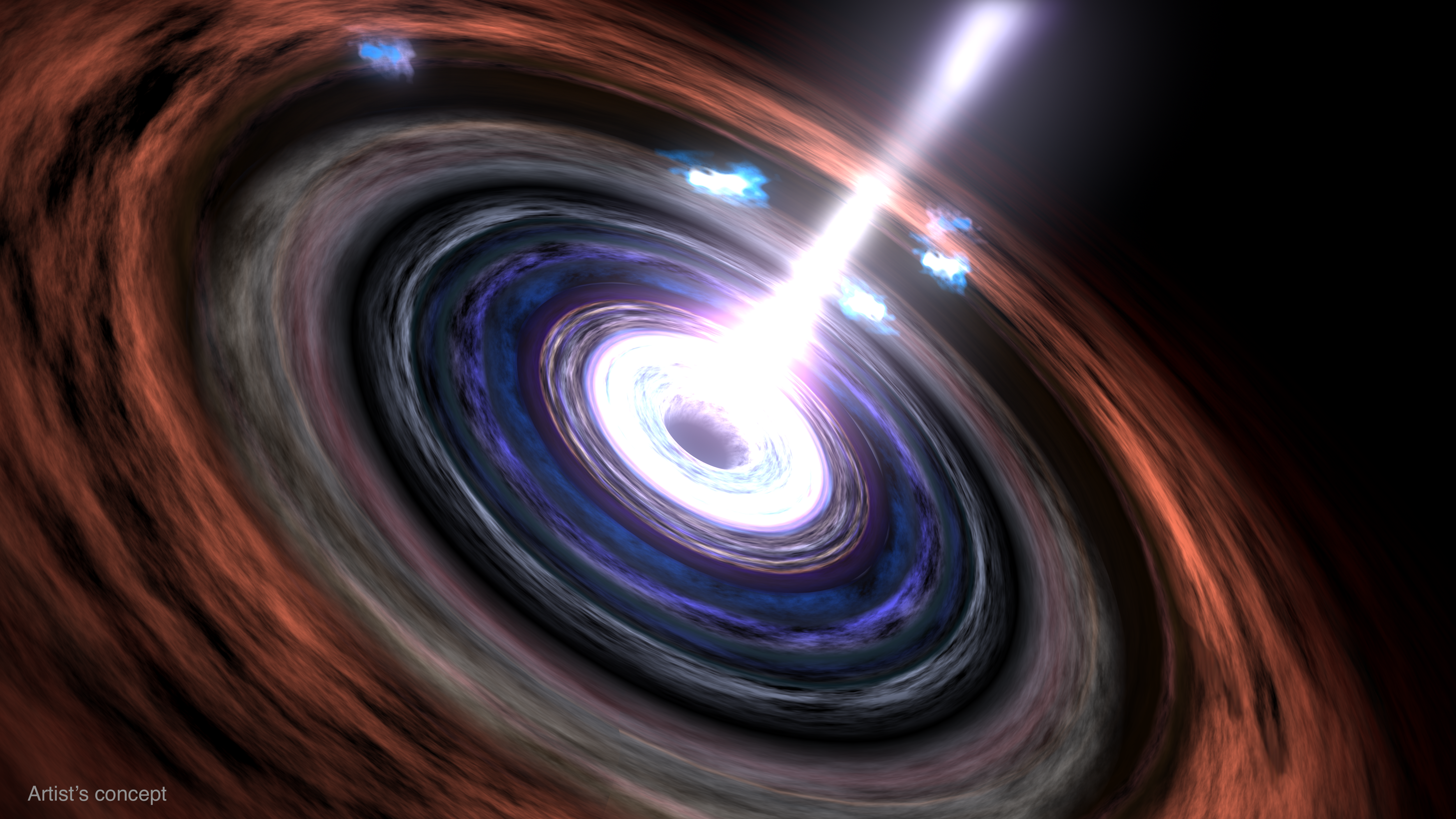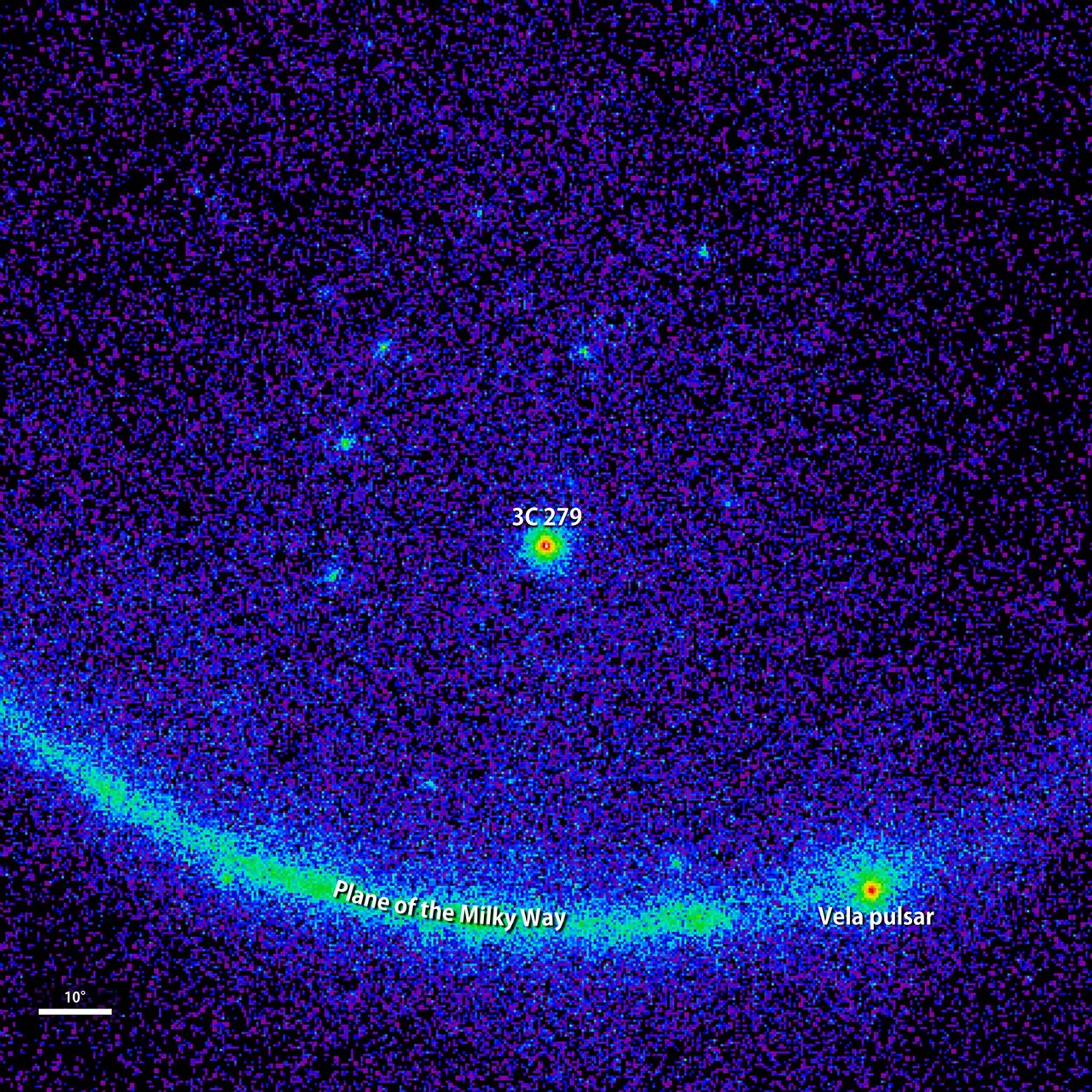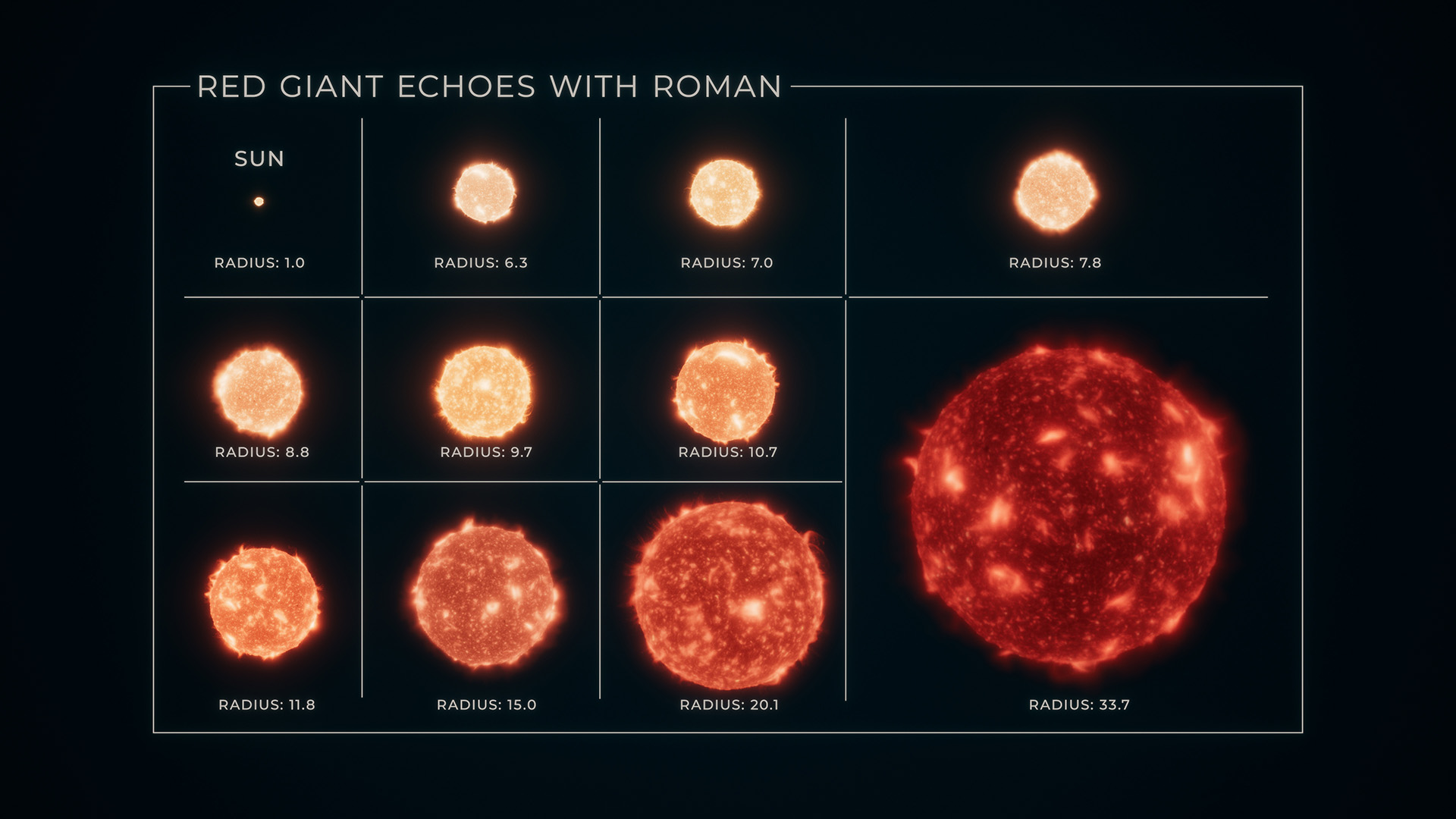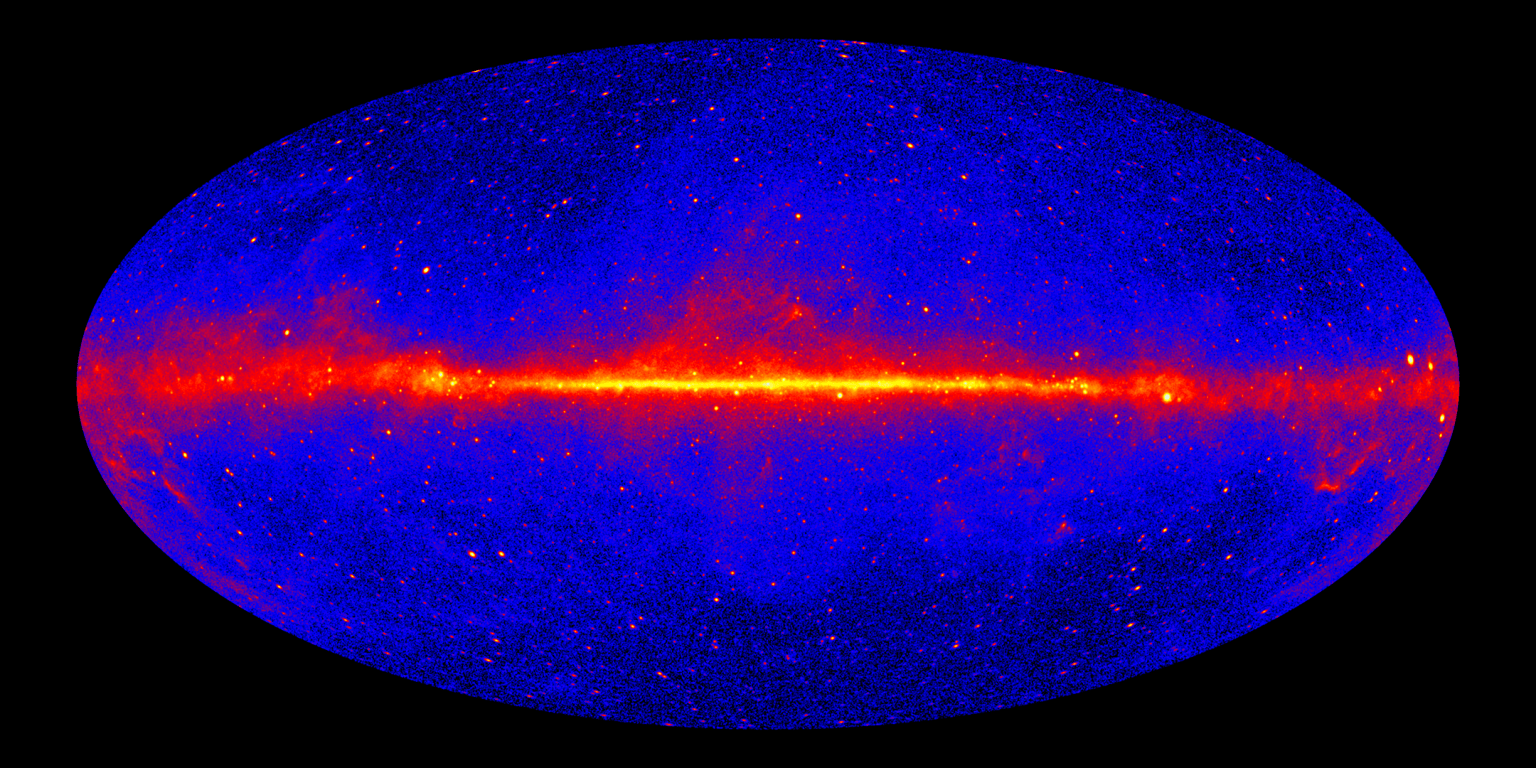Did you know some of the brightest sources of light in the sky come from the regions around black holes in the centers of galaxies? It sounds a little contradictory, but it’s true! They may not look bright to our eyes, but satellites have spotted oodles of them across the universe.
One of those satellites is NASA's Fermi Gamma-ray Space Telescope. Fermi has found thousands of these kinds of galaxies since it launched in 2008, and there are many more out there!
Black holes are regions of space that have so much gravity that nothing — not light, not particles, nada — can escape. Most galaxies have supermassive black holes at their centers, and these black holes are hundreds of thousands to billions of times the mass of our Sun. In active galactic nuclei (also called “AGN” for short, or just "active galaxies") the central region is stuffed with gas and dust that's constantly falling toward the black hole. As the gas and dust fall, they start to spin and form a disk. Because of the friction and other forces at work, the spinning disk starts to heat up.
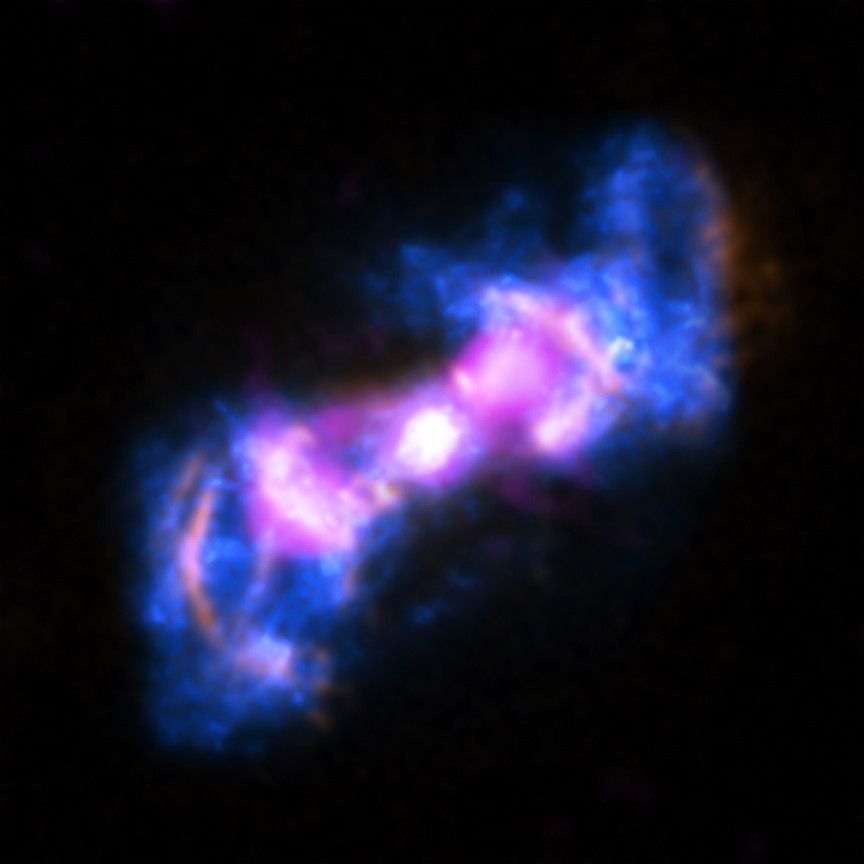
The disk's heat gets emitted as light, but not just wavelengths of it that we can see with our eyes. We detect light from AGN across the entire electromagnetic spectrum, from the more familiar radio and optical waves through to the more exotic X-rays and gamma rays, which we need special telescopes to spot.
About one in 10 AGN beam out jets of energetic particles, which are traveling almost as fast as light. Scientists are studying these jets to try to understand how black holes — which pull everything in with their huge amounts of gravity — somehow provide the energy needed to propel the particles in these jets.

Many of the ways we tell one type of AGN from another depend on how they’re oriented from our point of view. With radio galaxies, for example, we see the jets from the side as they’re beaming vast amounts of energy into space. Then there’s blazars, which are a type of AGN that have a jet that is pointed almost directly at Earth, which makes the AGN particularly bright.
Fermi has been searching the sky for gamma ray sources since 2008. More than half of the sources it has found have been blazars. Gamma rays are useful because they can tell us a lot about how particles accelerate and how they interact with their environment.
So why do we care about AGN? We know that some AGN formed early in the history of the universe. With their enormous power, they almost certainly affected how the universe changed over time. By discovering how AGN work, we can understand better how the universe came to be the way it is now.

























